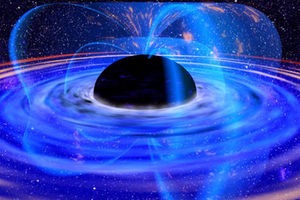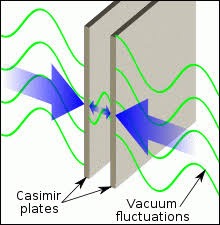 What was the universe before the Big Bang and what will be its end are some of the important questions which come to our mind. The universe was a singular point of infinite energy density which expanded at the time of Big Bang is the explanation, generally found in physics books. Explanation of what compressed this huge mass to a point volume with infinite energy density and what caused Big Bang is not generally found although there are concrete scientific evidence like red shifting of wavelengths of moving galaxies and presence of cosmic microwave background in the space justifying expansion of the universe.
What was the universe before the Big Bang and what will be its end are some of the important questions which come to our mind. The universe was a singular point of infinite energy density which expanded at the time of Big Bang is the explanation, generally found in physics books. Explanation of what compressed this huge mass to a point volume with infinite energy density and what caused Big Bang is not generally found although there are concrete scientific evidence like red shifting of wavelengths of moving galaxies and presence of cosmic microwave background in the space justifying expansion of the universe.
2. One explanation given by astrophysicists is that the universe evolved from vacuum. Warner and Parker were of the opinion that the universe might have evolved from vacuum. In classical mechanics, vacuum is nothing and does not denote any material. It is considered zero energy. But in quantum mechanics, situation is different. Here it corresponds to minimum energy level and is not nothing. This vacuum contributes to energy was proved by Physicist Casimir. He stated that this vacuum energy is attributed to quantum fluctuations in the vacuum. Casimir proved that when two conducting plates of area ‘L’ are placed at a small distance ‘a’ from each other, these exert force depending upon the boundary conditions. Boundary geometric conditions here are that the plates size should be appreciably larger than the distance between these plates. The force of attraction generated is proportional to the distance raised to the power four. But when there are no plates then there is no force or energy in that vacuum.

3. He explained that between these two parallel plates, virtual photons and virtual antiphotons are generated due to quantum fluctuations. These pairs after generation, annihilate each other and cause electric field parallel to the plates. And associated magnetic field is also generated perpendicular to the plate. This causes force of attraction between the plate. Wavelength of the electromagnetic field follows the principal that distance between the plates, ‘a’ = n/2 times the wavelength. Casimir effect was also observed practically between two sailing ships.
4. Did our universe also evolve from such vacuum energy? Let us apply the same principle to see its effect upon the evolution of the universe. Considering the universe as nothing but vacuum before Big Bang, admittedly, virtual particles and anti virtual particles would have generated at the time of violent expansion due to Big Bang. Normally, virtual particles and virtual antiparticles pairs recombine. In the present case, assuming that due to expansion and gravitation, the particles would have been ripped apart and could not find the opportunity of annihilation. Back reaction of this ripping apart the virtual particles would also have to be considered. Let this distance between the particles is ‘l’. To have real particles, these must have masses. Energy in the form of work done would have to be imparted to them to create their masses.
5. Here are some basic equations applicable to these virtual particles for analysing their properties.
That is m.g.l = m.c square (1)
Also by quantum mechanics, m. c square. t = h (2)
Distance between these ripped virtual particles
l = g.t square = c.t (3)
where m is mass of particle, c is velocity of light and h is Planck constant and t is cosmic time, ‘l’ is the distance between particles, g is acceleration due to gravity.
6. From these equations, cosmic time t, length l, mass m and particle density can be solved. This cosmic time on calculation is found to be quite large as compared to planck’s time. Length l is found to be of the range of Compton length.
7. After creation of Planck mass particles,we can apply all four unified forces, strong, electromagnetic, weak and gravitation to these particles. Their effects though same initially, had changed to different values presently. Thus the evolution of the universe is well explained.
8. But the likely problem to arise is that at the time of analysis, force of gravitation was assumed as ‘g’ and that means, assumption of space time curvature. According to general theory of relativity as propounded by Einstein, gravitation is always associated with space time. That further means, we have assumed mass which imparts gravitation. But in our analysis, there were virtual particles and these did not have mass and we imparted mass by imparting energy to these. The situation thus seems paradoxical in the sense whether space time caused mass or mass caused space time.
9. However, it may not be paradoxical, if both space time and mass generation had came hand in hand together. These photonic particles in the form of radiations would convert to baroyonic matter, then baryonic matter to Hydrogen atoms and further nucleus synthesis to higher atomic elements depending upon the temperature. Further lumps of gases mainly hydrogen gravitated and that increased its density. Dense lumps gravitated further and that compressed the gases to the stage when the temperature was sufficient enough to start nuclear fusion. Nuclear fusion emitted radiations and that led to formation of stars. Clusters of stars formed galaxies. Thus the universe reached its present state. In such a situation, everything came from nothing and nothing is not nothing.
10. Ancient Hindu Scriptures mention that in the beginning, it was darkness everywhere and then there came sudden intense light in the darkness in the form of Lord Bahama, the creator of the universe. Here darkness corresponds to vacuum and sudden light to radiations from Big Bang. The ancient verses, therefore, match with scientific explanation.
11. All said and done, vacuum fluctuations remain strong candidate that evolved the universe.
